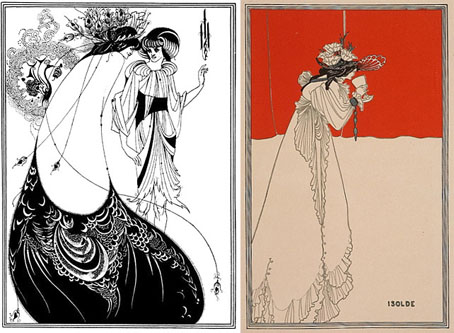The Critical Sphere
Secondary Sources
The Reading Experience
The Valve
Thusly armed with backup, I returned to "On Style" and forged through, emerging with a somewhat rudimentary grasp of what was going on and hopefully putting that into a brief outline here will make my brain stop hurting.
On Style
1. Style is inevitable in art; you cannot not have a style
- Sontag defines style as the degree/manipulation of distance that art maintains from the world; an expression of the will to 'dehumanize' art into a version of the world ... however, an audience wants to feel "closeness" with the world, not distance (want to have an emotional reaction to art!)
- "our manner of appearing is our manner of being. The mask is the face."
- The idea of this mask/face isn't restricted to a bad Jim Carrey movie and tends to be a recurring theme in contemporary theater.
- "Stylization" is over-emphasis on the style of presenting a subject -- "to place the accent less on what they are saying than on the manner of saying it"
 3. Art is typically treated as "a statement being made in the form of a work of art"
3. Art is typically treated as "a statement being made in the form of a work of art"- Sontag argues against this, that a work of art is an EXPERIENCE -- not a statement
- Although! Although! She later says that "Every style is a means of insisting on something." So this concept tends to be a little fuzzy within the essay.
- "Art is not only about something; it is something." (not just a commentary on the world)
- Basically, it's a dialogue.
- i.e. should you be expected to morally react the same way to a murder in reality versus a murder in a play or novel or depicted in a painting? (Sontag says no.)
- morality = a form of ACTING
- "The moral pleasure in art, as well as the moral service that art performs, consists in the intelligent gratification of consciousness."
... Green points out in his The Reading Experience post that, well, is bad art then immoral?
- "The qualities which are intrinsic to the aesthetic experience ... are also fundamental constituents of a moral response to life." (which, I think, means to say that your sensibilities as a person contribute to both the appreciation of a work of art AND how you morally act -- unless you happen to be Hannibal Lecter)
- The "ultimate reaction" to a work of art, Sontag says, "must be detached, restful, contemplative, emotionally free, beyond indignation and approval." (My question = can you have a visceral reaction to a great work of art? What is a visceral reaction; both aesthetic and moral, then? A bad painting of a bad murder?)
- For example, what's Hamlet about? You can only definitively say it's about Hamlet and his particular situation. Shakespeare makes no direct extrapolation to the human condition (and ah, back to "Against Interpretation" we go!).
- "What a work of art does is to make us see or comprehend something singular, not judge or generalize."
- Sontag argues for "the examination of works of art as historically specifiable phenomena"
... ex: technology and the impact on modern art
- "The most attractive works of art are those which give us the illusion that the artist had no alternatives." (example: I'm writing a novel and decide that Charlene lives in a red house, and this novel then gets published and the critics justify my red house decision as a sly commentary on Charlene's sexual state -- clearly she could not have had a green house!)
- "It is the perception of repetitions that makes a work of art intelligible." (example: oral poems remembered by their rhyme/meter ... or even 'row row row your boat' --though hardly art it illustrates the same mnemonic function)
- Some things can simply not be said (there are no words for this!), which results in "silences", inexpressible but also real.
About to start "The Idiot", hopefully tonight. Sontag has an essay on this, but I prefer to read it and any other notes after I finish the book with my own impressions. Which might take a while. Meanwhile, still slogging through Nicolo Machiavelli's "The Prince" -- boy, politics sure hasn't changed much in a couple centuries.